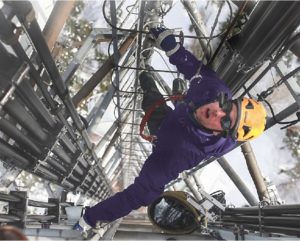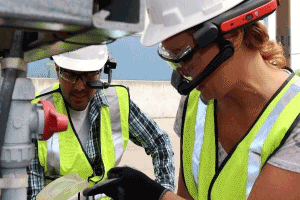4 Strategic Benefits of a Connected Remote Team
For many types of businesses, the pandemic led to a total rethinking of the concept of a workplace. Companies that had traditional offices were forced to find ways to transition to a remote workplace. However, companies in the utility industry have always relied on remote teams of field workers.
Utility companies have remote sites where they operate equipment to generate and distribute resources, such as electricity and water. These utility companies have teams of remote workers tasked with monitoring and maintaining the equipment at these sites.
Communication becomes a huge challenge for these remote workers. Once they are out in the field, remote teams have difficulty connecting with supervisors back at the main office and accessing the information they need to do their jobs. Even communicating with other members of the same team on-site can be difficult.
Connected worker technology helps remote team members communicate more easily with operations centers, headquarters and each other, promotes worker safety, and allows the teams to access the information they need to do their jobs correctly and efficiently. Connected workers can access inspection or maintenance data or even input notes. Also, the technology can be integrated into existing systems as well.
Here’s an overview of 4 strategic benefits of using Connected Worker technology for remote teams:
1) Increased Productivity

With Connected Worker technology, remote workers can perform their jobs more efficiently so they can get more accomplished during a workday. Digital workflows take field workers through a step-by-step process to accomplish tasks. The head-mounted wearable device allows remote team members to access real-time data and schematics. Progress on a task isn’t slowed by the need to carry and refer to blueprints or clipboards. Instead, information can be brought up on the hands-free headset by voice commands, allowing hands-free work and increased safety. Less downtime from accessing information leads to reduced downtime and more productivity.
2) Safer Worksite
Connected Worker technology is hands-free and can be integrated into hard hats, so remote workers don’t need to juggle a clipboard while trying to work on or inspect equipment. The headset has audio and visual feeds, enabling workers to access information without using their hands, issue verbal commands, and make verbal transcriptions. If workers do have an accident, they are in direct communication with other team members so they can get help immediately, improving outcomes for worker injuries. Connected Worker solutions can also detect “worker down” and automate alerting, have an SOS button, and track biometrics and RTLS (real-time location services).
3) Enhanced Team Communication
 Using the headset, remote workers can communicate directly and in real-time with each other and with supervisors back at headquarters. This can be 1-to-1 or 1-to-many communication. Workers can share their viewpoints through two-way video communication to get advice on how to perform a task or troubleshoot a problem. Subject matter experts can be contacted through the headset for knowledge transfer or remote guidance without the need for the expert to travel to a worksite. Connected Worker reduces the need for travel, saving costs and minimizing downtime.
Using the headset, remote workers can communicate directly and in real-time with each other and with supervisors back at headquarters. This can be 1-to-1 or 1-to-many communication. Workers can share their viewpoints through two-way video communication to get advice on how to perform a task or troubleshoot a problem. Subject matter experts can be contacted through the headset for knowledge transfer or remote guidance without the need for the expert to travel to a worksite. Connected Worker reduces the need for travel, saving costs and minimizing downtime.
4) Access to Information
Two-way audio and video communication allow remote workers to leverage all the information they need to do their jobs. The headset gives remote workers access to the utility company’s database and other resources that are stored on computers at company headquarters, such as schematics. On-screen annotation and 3D overlays can be used to perform complex tasks while in the field. Remote workers also have access to current standards and practices so they can stay in compliance.
The Future of the Utility Workforce
Energy Central, a news site for the utility industry, warns of a “graying utility workforce,” noting that utility workers are an average of 50 years of age. Because of its aging workforce, the utility industry needs to embrace new technologies as a means of knowledge transfer from the older generation of workers to the newer. Connected Worker can be used to create expert training content with step-by-step videos, expediting training. Connected Worker technology will be instrumental in preserving tribal industry knowledge and passing it on, allowing the utility industry to overcome yet another challenge facing remote teams.
CBT can help your utility company meet the field worker’s challenges by designing and implementing a customized Connected Worker solution. We work closely with our customers to identify use cases for Connected Worker and to develop software that achieves the desired functionalities.
See Connected Worker in action. Request a customized demo of the technology from CBT.
